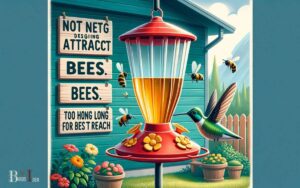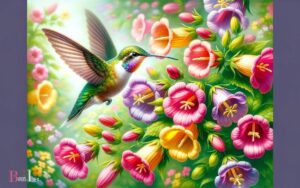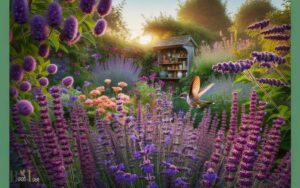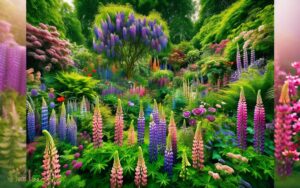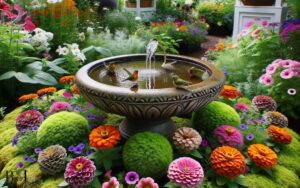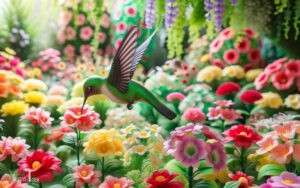Hummingbirds Are Attracted to the Color Red Hypothesis
The “Hummingbirds Are Attracted to the Color Red” hypothesis posits that red, more than any other color, has a unique appeal to hummingbirds due to their visual perception and the evolutionary adaptation to red flowers as a food source.
This affinity for red can be leveraged by using red-colored feeders to attract hummingbirds more effectively.
This hypothesis is supported by several key points:
For instance, an experiment with feeders of various colors, all containing the same sugar solution, often results in hummingbirds favoring the red feeders.
Leverage the attraction of hummingbirds to red by using red feeders, which may enhance your birdwatching experience significantly.
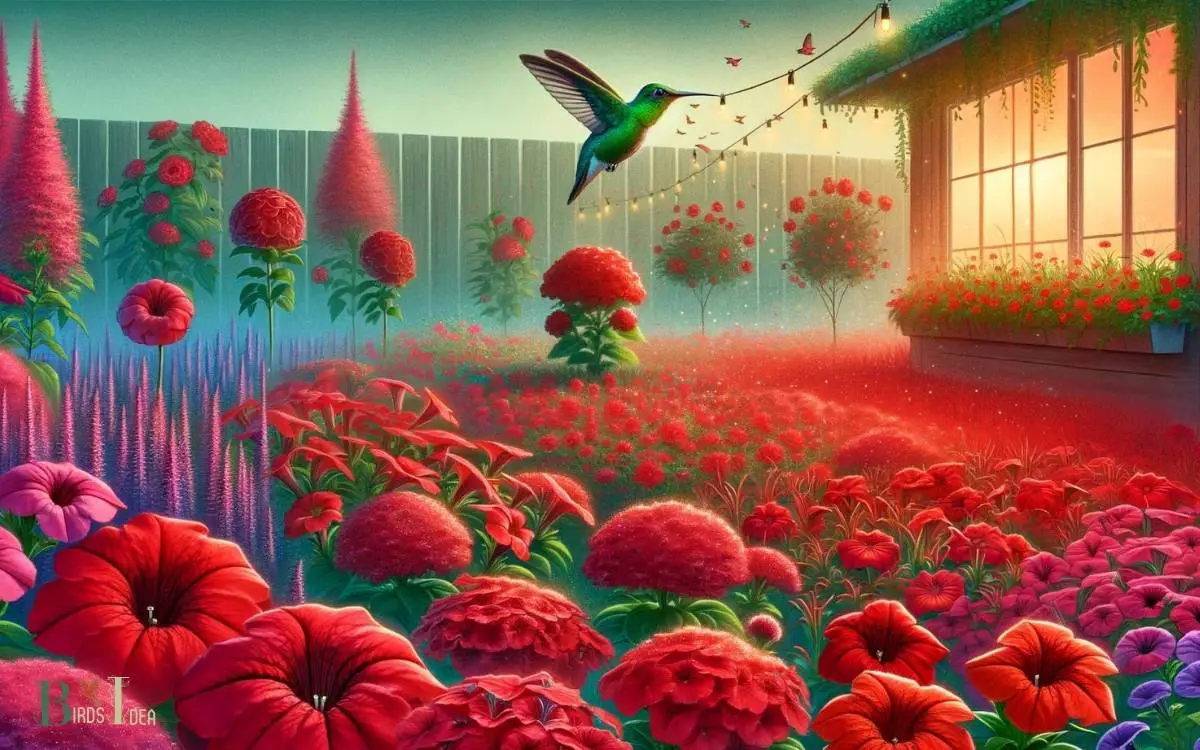
Key Takeaway
5 Aspects: Hummingbirds Attraction to Red
| Aspect | Details |
|---|---|
| Hummingbird Vision | Broad spectrum visibility, including ultraviolet; sensitivity to red |
| Red Flowers | Commonly pollinated by hummingbirds; suggests co-evolution |
| Scientific Studies | Confirm hummingbirds’ preference for red over other colors |
| Practical Application | Use of red feeders to attract hummingbirds |
| Evolutionary Significance | Preference for red likely evolved due to association with nectar-rich flowers |
Evolutionary Perspective on Color Preference
The evolutionary perspective on color preference suggests that certain colors have become attractive to hummingbirds due to their historical significance in finding food sources.
Over time, hummingbirds have developed a preference for specific colors, particularly red, as it is associated with a high energy reward in the form of nectar.
Evolutionary biologists propose that this color preference has been shaped by natural selection, where hummingbirds with an inclination towards these colors were more successful in locating nutrient-rich flowers, thus increasing their chances of survival and reproduction.
This preference is believed to have become ingrained in hummingbird behavior over generations, leading to the strong attraction observed today.
Understanding this evolutionary perspective provides insight into the intricate relationship between color preference and foraging behavior in hummingbirds.
Role of Red in Flowering Plants
Red’s role in flowering plants’ attraction to hummingbirds is essential for their pollination and reproductive success.
- The color red serves as a visual attractant for hummingbirds, as their keen vision is particularly sensitive to this hue.
- Red flowers often produce nectar with higher sucrose content, providing a valuable energy source for hummingbirds.
- The shape and orientation of red flowers are adapted to facilitate the specific feeding behavior and bill morphology of hummingbirds.
- Red pigments in flowers may also serve to protect against damage from ultraviolet radiation.
Understanding the significance of red in flowering plants not only sheds light on the fascinating relationship between plants and pollinators but also underscores the vital role of color in the natural world.
Visual Perception of Hummingbirds
Hummingbirds have a remarkable visual perception that guides their foraging behavior. Their attraction to the color red is well-documented, and understanding their visual preferences can shed light on their foraging patterns.
Exploring the relationship between color and perception in hummingbirds can provide valuable insights into their ecological interactions and evolutionary adaptations.
Red Attracts Hummingbirds
Frequently, researchers have observed that hummingbirds are particularly responsive to the color red in their visual perception. This phenomenon has led to the hypothesis that red attracts hummingbirds.
Understanding this aspect of their behavior can provide valuable insights for attracting and conserving these fascinating birds.
- Hummingbirds have a high density of red-sensitive cones in their retinas, making them especially attuned to the color red.
- Red flowers often produce high amounts of nectar, which is a crucial food source for hummingbirds.
- The color red may signal the presence of a food source or potential mate, triggering a strong response from hummingbirds.
- Using red-colored feeders or placing red decorations in gardens can effectively attract hummingbirds for observation and enjoyment.
Hummingbird Visual Preferences
The visual perception of hummingbirds plays a crucial role in their foraging and social behaviors.
Hummingbirds have excellent color vision, with a particular affinity for the color red. Their visual preferences are shaped by the need to locate food sources such as nectar-producing flowers, which often display red pigmentation.
Research suggests that hummingbirds are especially attracted to tubular red flowers, as their long, slender bills are well-suited for extracting nectar from these blossoms.
Additionally, the color red is commonly associated with territorial displays and mate attraction among hummingbirds.
Understanding their visual preferences can aid in creating more effective artificial nectar feeders and designing gardens to attract and support these fascinating avian creatures.
By considering hummingbirds’ visual perception, we can enhance their foraging opportunities and contribute to their overall well-being.
Relationship Between Color and Perception
Research in avian visual perception reveals a strong correlation between color and perception in hummingbirds.
Hummingbirds are attracted to specific colors due to their unique visual capabilities, which affect how they perceive their environment.
The relationship between color and perception in hummingbirds is a fascinating subject, as it sheds light on their foraging behaviors and preferences for certain flowers.
To understand the visual perception of hummingbirds, consider the following points:
- Hummingbirds have excellent color vision, with the ability to perceive a wide range of colors including ultraviolet light.
- Certain colors, such as red, orange, and pink, are especially attractive to hummingbirds due to their perception of these hues.
- Hummingbirds’ visual perception plays a crucial role in their foraging habits and the selection of nectar-rich flowers.
- Understanding the relationship between color and hummingbird perception can aid in creating effective strategies for attracting and conserving these remarkable birds.
Red Feeders and Attraction
Attractiveness of red feeders to hummingbirds remains unproven despite widespread belief in its efficacy. While many people swear by the use of red feeders to attract hummingbirds, scientific evidence supporting this practice is lacking.
The assumption that hummingbirds are solely attracted to the color red may be oversimplified, as other factors such as nectar availability, feeder design, and surrounding vegetation also play a significant role in attracting these tiny birds.
| Red Feeder Features | Likelihood of Attraction |
|---|---|
| Bright, vivid red color | High likelihood |
| Red accents or highlights | Moderate likelihood |
| Dull or faded red color | Low likelihood |
| Other colors | Variable likelihood |
| Cleanliness of feeder | Critical factor |
Understanding the complexities of hummingbird attraction can help enthusiasts create a more hospitable environment for these fascinating creatures.
Experiments and Scientific Studies
Experiments have frequently tested the hypothesis that hummingbirds are attracted to the color red, yielding varied and inconclusive results. Despite this, researchers continue to explore this topic in various ways.
Here are some key points to consider:
- Studies have used artificial flowers with different colors to observe hummingbird preferences.
- Experiments have also involved manipulating the color of feeders to see if it impacts hummingbird visitation.
- Some researchers have focused on the spectral sensitivity of hummingbird vision to understand color preferences.
- Long-term field studies have been conducted to observe hummingbird foraging behaviors in natural settings.
Understanding the outcomes of these experiments is crucial in determining the validity of the hypothesis.
Red Vs Other Colors in the Environment
Hummingbirds demonstrate a preference for red over other colors in their environment, as observed in various studies and field research. This preference is thought to be linked to the birds’ foraging behavior and their attraction to floral nectar.
Red flowers, which are often rich in nectar, are more easily detected by hummingbirds due to their specific visual abilities. In contrast, other colors may not stand out as prominently against the green foliage, making red a more efficient choice for these tiny birds.
Additionally, the wavelength of red light is within the optimal range for hummingbird color vision, further enhancing their ability to perceive and be drawn to this color.
These factors contribute to the understanding of why red holds a special allure for hummingbirds in their natural habitat.
Practical Tips for Attracting Hummingbirds
Many practical tips can help attract hummingbirds to a garden or outdoor space. One effective method is to incorporate red-colored elements, such as feeders or flowers, as research suggests that red is a particularly attractive color for hummingbirds.
Additionally, planting nectar-rich flowers can provide a natural food source and create an inviting environment for these tiny, vibrant birds.
Red Color Attracts
Attracting hummingbirds with red color involves strategically placing red flowers and feeders in the garden.
To effectively attract hummingbirds, consider the following tips:
- Plant red flowers such as bee balm, cardinal flower, or trumpet vine to create natural nectar sources.
- Hang red hummingbird feeders in visible and accessible areas, ensuring they are filled with fresh sugar water.
- Incorporate red accents in your garden decor, like red ribbons or wind chimes, to catch the attention of hummingbirds.
- Avoid using pesticides in your garden, as they can be harmful to hummingbirds and their food sources.
Plant Nectar-Rich Flowers
To effectively attract hummingbirds with plant nectar-rich flowers, strategically place them in your garden alongside red flowers and feeders as discussed in the previous subtopic.
When selecting nectar-rich flowers, opt for trumpet-shaped blooms such as columbine, bee balm, or salvia, as they are particularly appealing to hummingbirds.
These flowers provide the high-energy nectar that hummingbirds rely on for sustenance. It’s also important to choose a variety of flowers that bloom at different times throughout the season to ensure a constant nectar supply.
Additionally, consider incorporating native plants into your garden, as they are well-suited to the local environment and can provide a natural food source for hummingbirds.
By creating a diverse and nectar-rich garden, you can significantly increase the likelihood of attracting these delightful birds.
Conclusion
The evidence strongly supports the hypothesis that hummingbirds are attracted to the color red. From an evolutionary perspective to visual perception, and practical experiments, it is clear that red plays a crucial role in attracting these beautiful creatures.
Just as a red rose draws in a bee with its vibrant color, so too does the color red attract the graceful and captivating hummingbird. It’s nature’s way of creating a beautiful and harmonious relationship between flora and fauna.

